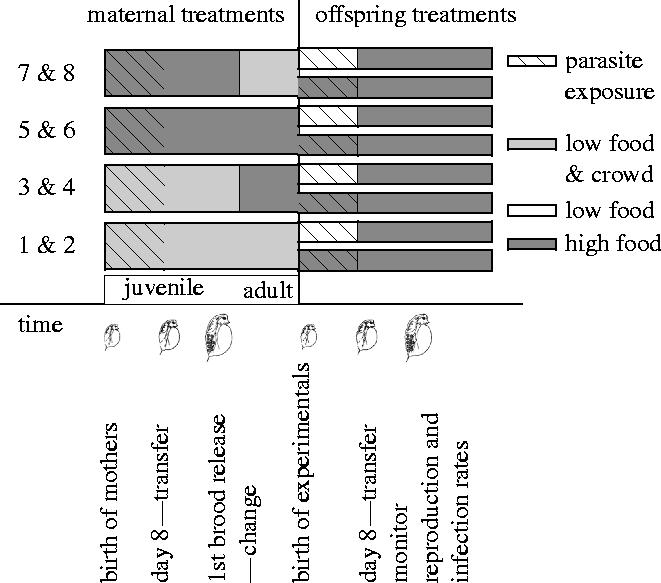Figure 1.

The Experimental set up. There were eight maternal treatments (1–8), consisting of four environmental conditions, each represented by a bar comprising two treatments: with (even numbers) or without (odd numbers) parasites during the exposure protocol during the first seven days. The batch control populations are not shown, but were raised under good conditions in 3 litres of water without a parasite exposure protocol. Mothers were raised under good or stressful environments. The ‘juvenile’ maternal stage lasted until the release of the first brood, at which point mothers either remained in the same environment or were switched to the other environment for the ‘adult’ stage. Good conditions were high food and frequent water change; stress conditions were low food and crowding. Offspring from the fourth broods (i.e. the third broods after the release of the first broods and change in environmental conditions) were used in the assays of offspring susceptibility to P. ramosa. Maternal broods were split into two replicates that were given either low- or high-food conditions and all offspring were exposed to parasites. In both the maternal and offspring generations, parasite exposure (shown as hatched lines) occurred during actual juvenile development, from within 24 h of birth until day 7 at 20 °C. After the exposure period, offspring were monitored for reproduction and signs of infection.
